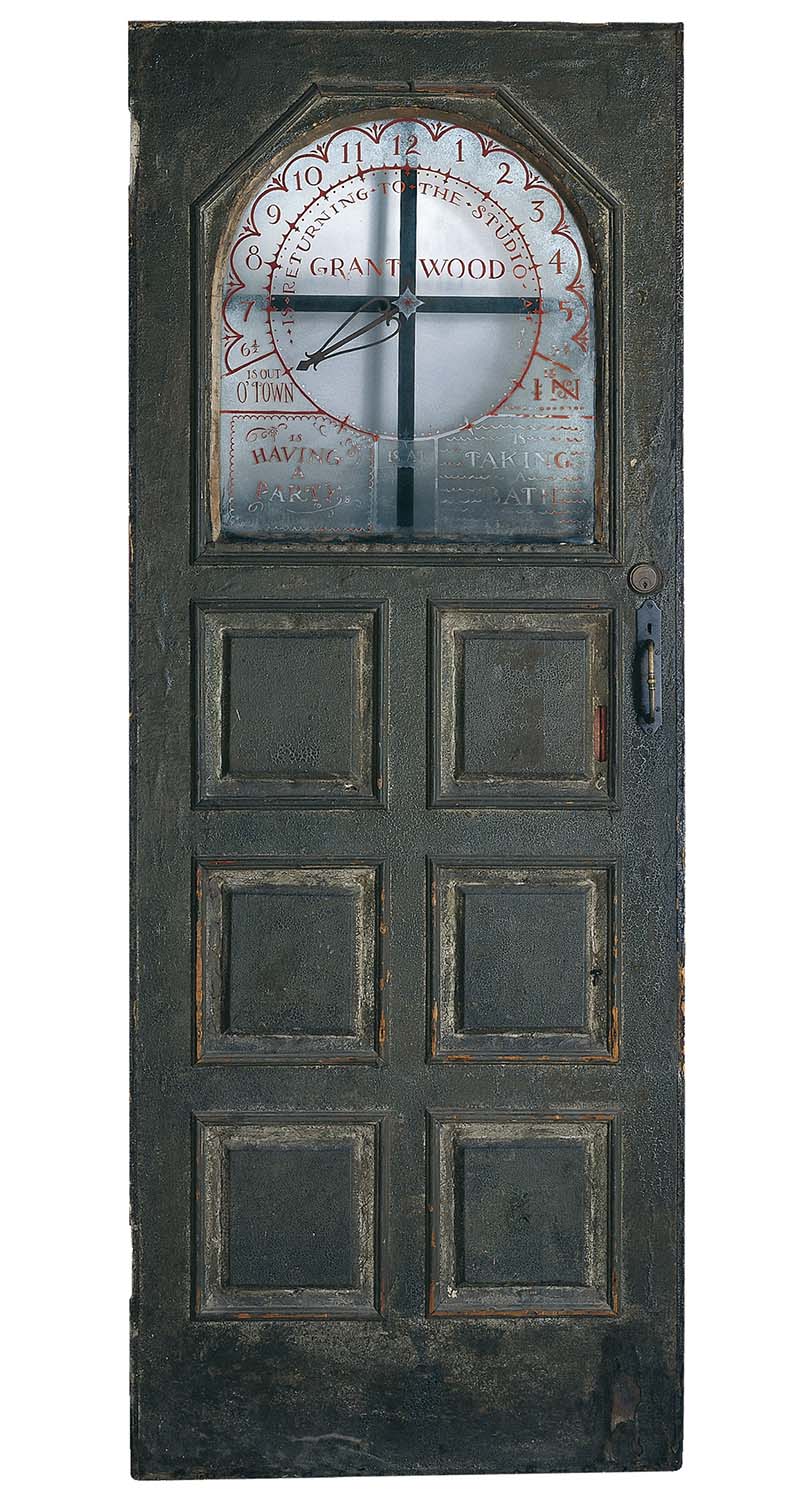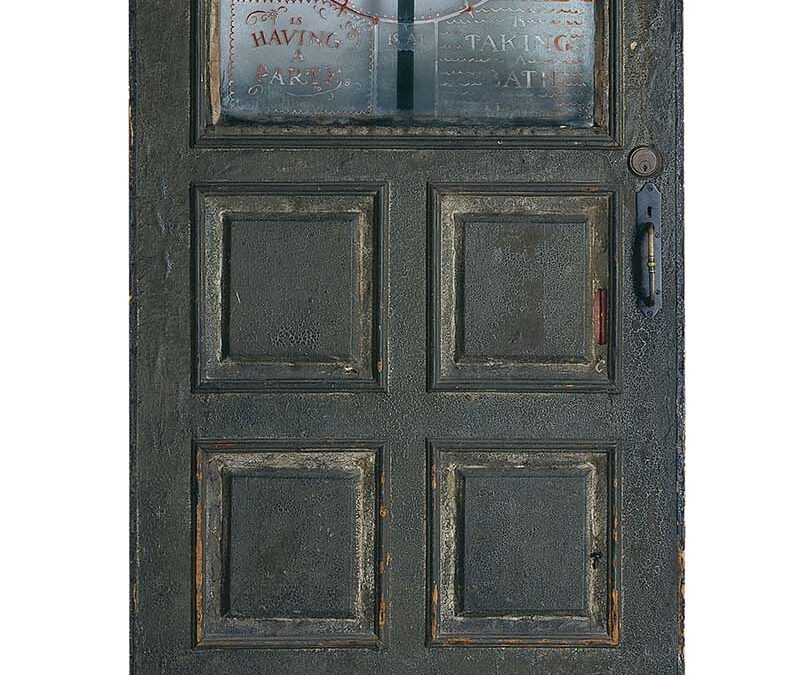Door to 5 Turner Alley

| Maker | Grant Wood |
| Date of Creation | 1924 |
| Location | Cedar Rapids, Iowa |
| Materials | Painted wood, fabric, glass, and wrought iron |
| Institution | Cedar Rapids Museum of Art |
| Credit Line | Gift of Harriet Y. and John B. Turner II |
| Accession Number | 72.12.15 |
| Photo Credit | Cedar Rapids Museum of Art |
When the Turner family purchased the Douglas Mansion in Cedar Rapids with the intention of converting it into a funeral home, they commissioned Grant Wood, later known as Iowa’s most famous artist, to redesign the mansion’s interior for its new function. It was at this time that the Turners also gave Wood permission to convert the unused upper floor of the rear carriage house into a studio and residence. Visitors entered the studio through a front door which he fashioned from a primitive coffin lid with a glass window, a humorous reminder of the mortuary next door and the hearses below. Wood painted a playful “clock” on the glass. Around the edge of the clock is lettered: “Grant Wood Is Returning To The Studio At” and a revolving metal arrow like the hand of a clock, pointing to either his time of return or options such as, “Is Taking A Bath,” “Is Having A Party,” or “Out O’ Town.” No less attention was lavished on the surface of the door, which was covered with a linen fabric and textured paint, and then glazed an antique bronze-green color. Grant Wood is known for his Regionalist work such as American Gothic (1930), but was a product of this small but burgeoning Midwestern city, where his teachers and the community applauded Wood’s talent for drawing and making clever objects. Wood attended Washington High School and, together with his good friend and fellow artist, Marvin Cone, painted scenery for school plays and illustrated school publications. The two young artists also assisted with the installation of exhibitions at the Cedar Rapids Art Association, originated in 1895 and located in the Carnegie Library. While in high school, Wood taught himself to make jewelry, copperware, ornamental light fixtures, and furniture. Following his 1910 high school graduation, Wood completed two summers of study at the Handicraft Guild School of Design, Handicraft, and Normal Art in Minneapolis, Minnesota. In 1913, he moved to Chicago to join the Kalo Arts and Crafts Community House, but by 1916, due to financial difficulties, Wood returned to Cedar Rapids.

